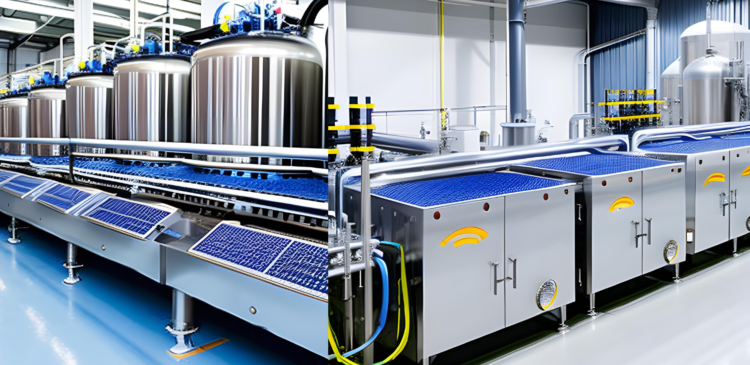Embracing the Future: Dairy Automation Revolutionizes the Milk Processing

Introduction:
The dairy industry is experiencing a significant transformation with the integration of dairy automation in milk processing. Traditional manual processes are being replaced by advanced automated systems, revolutionizing the way milk is received, pasteurized, separated, homogenized, and packaged. This technological evolution brings numerous benefits, including improved efficiency, enhanced product quality, and increased safety standards. In this blog, we explore the advantages and implementation of automation in milk processing plants, paving the way for a more streamlined and innovative dairy industry.
- Increased Efficiency and Productivity:
Automation in milk processing plants ensures higher levels of efficiency and productivity. Manual tasks that were once time-consuming and labor-intensive are now automated, saving valuable time and resources. Automated systems can handle large volumes of milk, reducing processing time and optimizing production capacity. From milk reception to packaging, every step is seamlessly integrated, allowing for a more streamlined and uninterrupted workflow.
- Consistent Product Quality:
Maintaining consistent product quality is crucial in the dairy industry, and automation plays a pivotal role in achieving this objective. Automated processes ensure precision and accuracy, minimizing human error and variations in product quality. Parameters such as temperature, pressure, and timing are carefully controlled and monitored, guaranteeing that each batch of milk undergoes the same standardized process. This consistency leads to reliable and uniform product characteristics, meeting consumer expectations and building brand reputation.
- Enhanced Safety and Hygiene:
Automation brings significant advancements in terms of safety and hygiene in milk processing plants. Automated systems are designed to meet stringent sanitary standards, minimizing the risk of contamination. With automated milk reception, the likelihood of human contact and potential sources of contamination are greatly reduced. Additionally, automated cleaning-in-place (CIP) systems ensure thorough and efficient cleaning of processing equipment, maintaining optimal hygiene levels and preventing cross-contamination.
- Improved Traceability and Data Management:
Automation enables accurate traceability and efficient data management throughout the milk processing journey. Each batch of milk can be tracked and monitored, from the source of collection to the final packaged product. Automated systems capture and store essential data, including milk source, processing parameters, quality tests, and packaging details. This information facilitates quality control, regulatory compliance, and recall management, ensuring transparency and accountability in the production process.
- Flexibility and Customization:
Modern automated systems offer flexibility and customization options to meet the specific needs of milk processing plants. Different milk types, such as cow, buffalo, or camel milk, can be processed with ease using adjustable parameters and settings. Automation allows for precise customization of processes such as pasteurization, separation, and homogenization, catering to specific product requirements. This adaptability enhances product diversity, enabling dairy processors to meet evolving consumer demands and preferences.
- Energy and Resource Efficiency:
Automation not only optimizes production processes but also promotes energy and resource efficiency in milk processing plants. Advanced technologies, such as energy-efficient heat exchangers and intelligent control systems, help minimize energy consumption. Automated systems can also monitor and regulate resource usage, such as water and cleaning agents, ensuring optimal utilization and reducing waste. These eco-friendly practices contribute to sustainability goals and cost savings for dairy businesses.
Implementation Considerations:
While embracing automation in milk processing brings numerous benefits, there are some key considerations to keep in mind:
- Invest in reliable and proven automated systems from reputable manufacturers.
- Ensure proper training and education for operators to effectively manage and maintain the automated equipment.
- Regularly update and maintain automation software and hardware to ensure optimal performance and security.
- Conduct thorough cost-benefit analyses to assess the return on investment (ROI) of implementing automation in milk processing plants.
- Seek guidance from industry experts and consultants to identify the most suitable automation solutions for specific processing requirements.
Conclusion:
Automation has become a game-changer in the dairy industry, transforming milk processing plants into highly efficient and quality-driven operations. The integration of automation technology enhances productivity, improves product consistency, ensures safety and hygiene, and enables effective data management. By embracing automation, milk processors can stay ahead of the competition, meet consumer demands, and build a sustainable and innovative dairy business. Embrace the future of milk processing with automation and unlock the full potential of your dairy operations
